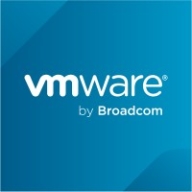

OpenText Recover and VMware Live Recovery are competing products in data protection and recovery solutions. OpenText Recover receives more positive attention for pricing and support, whereas VMware Live Recovery is noted for its advanced feature set, making it seem worth the investment.
Features: OpenText Recover offers flexibility and integration capabilities with robust scheduling and automation features, supporting diverse environments. VMware Live Recovery stands out for rapid recovery performance, real-time monitoring, and its focus on minimizing downtime.
Ease of Deployment and Customer Service: OpenText Recover’s straightforward deployment model, supported by extensive customer service, ensures efficient troubleshooting. VMware Live Recovery, with a more complex deployment model, focuses on offering thorough assistance with its wide-reaching support network.
Pricing and ROI: OpenText Recover provides an attractive initial setup cost and cost-effective subscription models, enabling quicker ROI. VMware Live Recovery, despite its higher initial setup cost, provides long-term benefits and superior capabilities, offering a considerable return on investment over time. The choice often depends on budget constraints and scalability needs.
| Product | Market Share (%) |
|---|---|
| VMware Live Recovery | 7.3% |
| OpenText Recover | 0.7% |
| Other | 92.0% |


| Company Size | Count |
|---|---|
| Small Business | 36 |
| Midsize Enterprise | 12 |
| Large Enterprise | 40 |
OpenText Recover offers businesses a robust data protection solution, ensuring continuity and data recovery across key infrastructures.
With OpenText Recover, organizations are empowered with reliable recovery measures that protect mission-critical data, featuring seamless integration across various platforms. The technology aligns with industry's best practices, delivering comprehensive safeguards that enhance resilience.
What are the key features of OpenText Recover?OpenText Recover is widely implemented across industries like finance, healthcare, and telecommunications. It supports data integrity and swift recovery in financial systems, ensures patient data is safeguarded in healthcare, and helps telecom providers maintain uninterrupted services. The diverse applications make it a versatile tool in maintaining critical operations.
We monitor all Disaster Recovery (DR) Software reviews to prevent fraudulent reviews and keep review quality high. We do not post reviews by company employees or direct competitors. We validate each review for authenticity via cross-reference with LinkedIn, and personal follow-up with the reviewer when necessary.